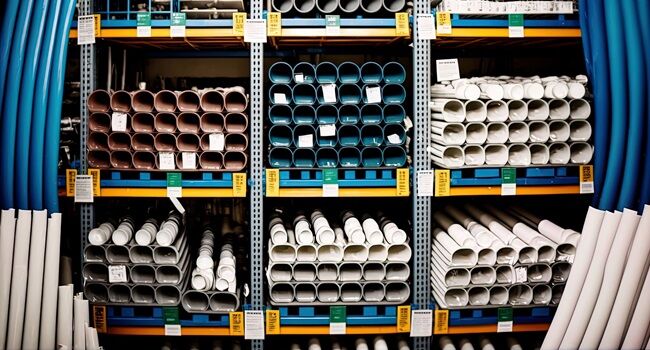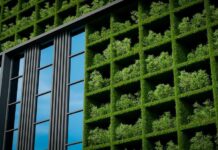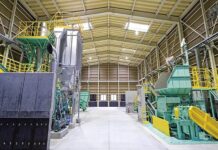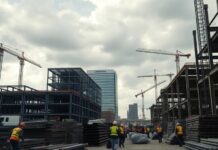When you think of plastics, construction might not be the first thing that comes to mind. But plastics have quietly transformed the construction industry. They’re reshaping how buildings are designed, materials are used, and how structures come to life.
As the world embraces technological advancements and sustainable construction practices, plastics are stepping into the spotlight as innovative materials that bring durability, flexibility, and cost-efficiency to the forefront. Let’s explore how plastics are transforming modern construction projects, making them faster, smarter, and more environmentally friendly.
1. Plastics in Modular Construction
The rise of modular construction has been one of the most significant shifts in the construction industry, and plastics have played a pivotal role. Modular construction relies on pre-fabricated components that are assembled on-site, a method that saves time and resources.
Plastics, thanks to their lightweight and moldable properties, are ideal for creating modular units. The plastic extrusion process, which shapes plastic into specific profiles, is often used to create precise, durable, and reusable components for walls, roofs, and flooring systems. These materials allow for seamless integration, making the construction process smoother and more efficient.
For instance, modular homes often incorporate PVC (polyvinyl chloride) panels for walls, which are not only waterproof and fire-resistant but also cost-effective. This innovative use of plastics ensures quicker assembly without compromising quality.
2. Waterproofing and Safety
Waterproofing is a critical concern in modern construction, and plastics have proven indispensable in this regard. Polyethylene sheets and membranes are commonly used for foundation waterproofing, preventing water infiltration and structural damage.
Additionally, plastic materials enhance safety on construction sites. High-visibility plastic barriers, for example, are widely used to signal hazardous zones. Plastics are also used in fire-resistant panels and coatings, adding an extra layer of protection for workers and future occupants.
3. Lightweight Yet Strong: Plastics for Structural Durability
One of the most remarkable qualities of plastics is their strength-to-weight ratio. In construction projects, this characteristic proves invaluable. Traditional materials like steel or concrete are sturdy but heavy, adding logistical and structural challenges. Plastics, on the other hand, provide the same durability while being significantly lighter.
Take high-density polyethylene (HDPE) pipes, for instance. These materials are crucial for water and gas distribution in construction sites. Their lightweight nature means they are easier to transport and install, reducing labor and machinery costs. Similarly, reinforced plastic composites are replacing metals in bridge construction and cladding systems, offering resilience against corrosion and harsh weather conditions.
4. Insulation and Energy Efficiency
Plastics have transformed how modern construction prioritizes energy efficiency. Expanded polystyrene (EPS) and polyurethane foam are popular choices for insulation on walls, roofs, and floors. These materials not only prevent heat loss but also enhance the overall thermal performance of a building.
Imagine the savings on energy bills when your home maintains a consistent indoor temperature year-round. By using plastic insulation, construction companies align with sustainable construction practices, reducing energy consumption and environmental impact.
5. Plastics for Sustainable Construction
You might wonder how plastics can contribute to sustainable construction practices, given their association with environmental concerns. The truth is that modern plastics are evolving to meet the demands of eco-conscious construction projects.
There’s an increasing demand for recycled plastics to make construction materials, from tiles to decking. For example, plastic lumber, made from recycled materials, is a durable and environmentally friendly alternative to traditional wood. Similarly, bioplastics—derived from renewable sources like corn starch—are gaining traction as a sustainable option in the construction industry.
This shift not only reduces waste but also promotes circular economy principles, where materials are reused rather than discarded.
6. The Role of Technology: Plastics and Building Information Modeling (BIM)
Building Information Modeling (BIM) has become an integral tool in modern construction, and plastics play a vital role in this technological advancement. BIM allows construction professionals to visualize and manage innovative materials, including plastics, throughout the construction process.
For example, by incorporating plastic components into BIM designs, engineers can simulate how these materials will perform under specific conditions. This reduces material waste, enhances precision, and ensures that every aspect of the project aligns with sustainable construction practices.
7. Enhancing Design Flexibility and Simplifying Project Management
Plastics offer a unique combination of versatility and efficiency that addresses many challenges faced in modern construction. From enabling creative designs to reducing costs and timelines, their benefits have become indispensable across various construction applications.
Plastics can be molded into virtually any shape, providing architects and engineers unparalleled creative freedom. From intricate facades to unique structural elements, plastics make ambitious designs achievable. For instance, transparent polycarbonate sheets are used for skylights and greenhouses, adding aesthetic appeal while maximizing natural light. Their versatility opens up possibilities that traditional materials can’t match.
The lightweight nature of plastics and their ease of installation directly impact project timelines. On large-scale construction sites, time saved is money saved. Using plastic-based components simplifies transportation, reduces the need for heavy equipment, and minimizes construction delays.
Integrating plastics lets builders optimize project management and meet deadlines more efficiently. Thus, creating value for both the client and the construction team.
Plastics Pave the Way Forward
From the flexibility of the plastic extrusion process to the eco-friendly possibilities of recycled materials, plastics are a game-changer for modern construction. They enhance energy efficiency, streamline the construction process, and introduce sustainable options that benefit the environment.

So, whether you’re designing the next skyscraper, a modular home, or an eco-friendly office, plastics are an innovative material you can’t afford to overlook. Embracing these advancements ensures that construction projects meet the demands and challenges of a more sustainable future.





























